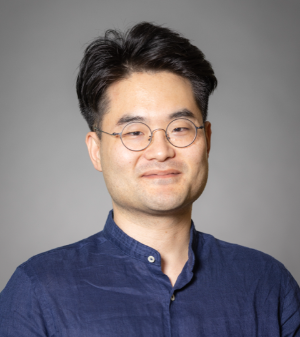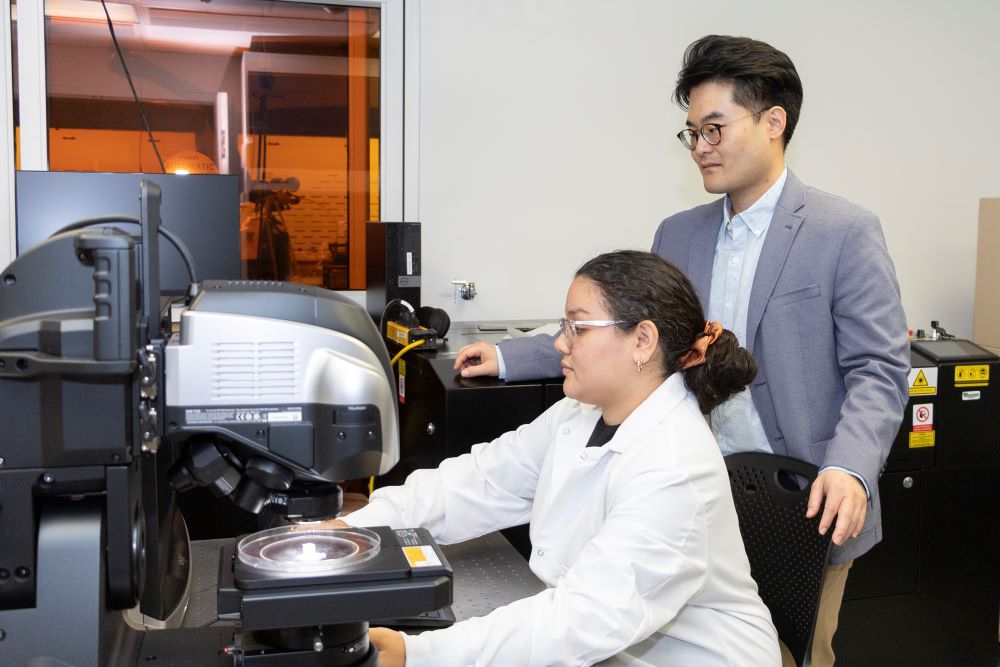College of Engineering News Room
Getting Big Results from Tiny Devices with Dr. Albert Kim
By Brad Stager


Working at the intersection of biology and engineering, Dr. Albert Kim focuses on the small end of things to find solutions that improve peoples’ lives.
“I may not be able to change the world myself, but I firmly believe I can at least contribute to the course of change by a tiny bit,” says Kim, who is an assistant professor at the University of South Florida Department of Medical Engineering, which combines resources of the College of Engineering and the Morsani College of Medicine.
Of particular interest to Kim is the development of implantable microdevices that provide medical benefits to patients from inside their bodies.
Implantable microdevices are miniaturized electronic medical devices that use biosensors to monitor general vital signs or specific biological activities and are surgically inserted into patients. They are also used in therapeutic treatments as in the case with cardiac pacemakers or devices that deliver medicine such as insulin.
Kim’s research ranges from smart dental implants that monitor and treat surrounding gum and bone tissue to devices that can support cancer patients, such as the Totally Implantable Oxygen Generator, a device that delivers tailored oxygen therapy to reverse hypoxia, a condition whereby the oxygen level of cells is dangerously low. Low levels of oxygen in cells can damage or kill them, resulting in a range of problems such as brain injury or even death. It is a condition that is common in cancer patients and can hinder treatment of their tumors.
“Hypoxia is one of the main reasons for the poor prognosis of cancer patients,” says Kim, who received his PhD in electrical and computer engineering from Purdue University. Hypoxia is also a factor in respiratory failure of COVID-19 patients.
The implantable, ultra-low power devices are operated remotely and can run for a little over 3 hours before the battery needs to be recharged, which can be accomplished wirelessly, leaving the TIOG in place to perform its work of deriving oxygen from water.
“The TIOG is capable of in situ tumor oxygenation through water electrolysis,” says Kim. “Furthermore, the TIOG uses pulsed electrolysis that suppresses chlorine generation, which could damage cells.”
One advantage for patients is that using the device allows greater mobility than current hypoxia therapies. The device can also be built from readily available materials. Kim’s work on the TIOG system is detailed in the April issue of Transactions on Biomedical Engineering, which is published by the IEEE Engineering in Medicine and Biology Society. Kim says having the research about TIOG published is an important achievement.
“The IEEE Transactions on Biomedical Engineering is the oldest biomedical engineering journal, with a history of 71 years. It is my most incredible honor to be featured in one of the prestigious journals in the field. They are an acknowledgement of our research and hard work.”

The TIOG reflects Kim’s interest in biomedical microelectromechanical systems and as director of USF’s Acousto Bioelectronics Lab, Kim pursues a variety of related research projects, such as a smart stent that can be implanted in patients recovering from abdominal aortic aneurysm repair surgery. Stents are used in these patients to prevent blood flow in the aneurysm sac. Kim’s smart stent also features the ability to monitor blood flow and sense problems like leaks or stent occlusions.
Whether it is helping people maintain a healthy smile or beat cancer, Kim says making a difference is what motivates him in his work.
“I chose Engineering because I wanted to impact the world in a way that really matters, especially biomedical engineering can bring a direct impact, for example, on my family and friends.
According to Kim, the next steps for the TIOG include improving the device’s compatibility with human biology and conducting long-team research with living organisms.
You can read Kim’s article about the TIOG at the IEEE Transactions on Biomedical Engineering website, https://www.embs.org/tbme/ and cover page here.